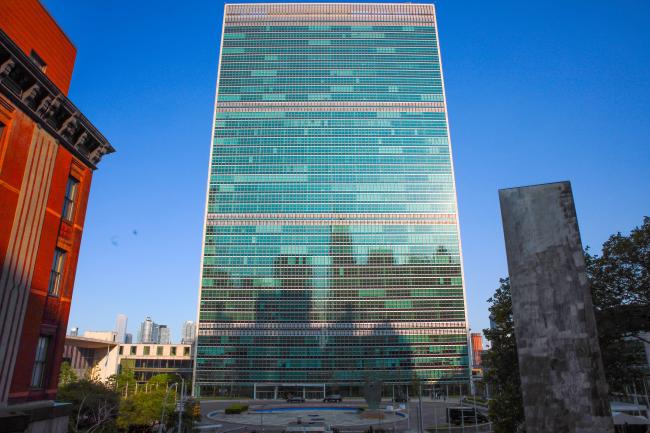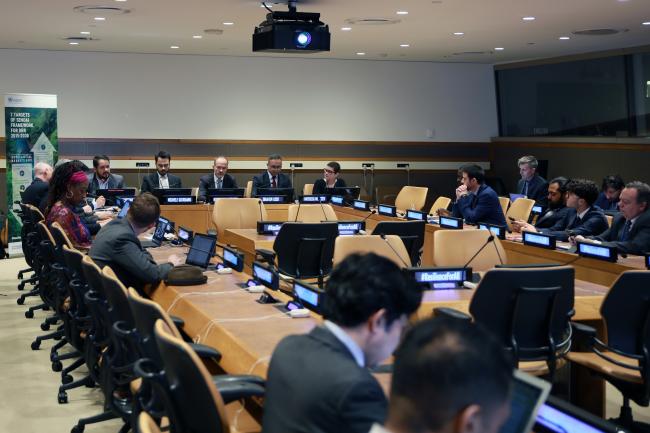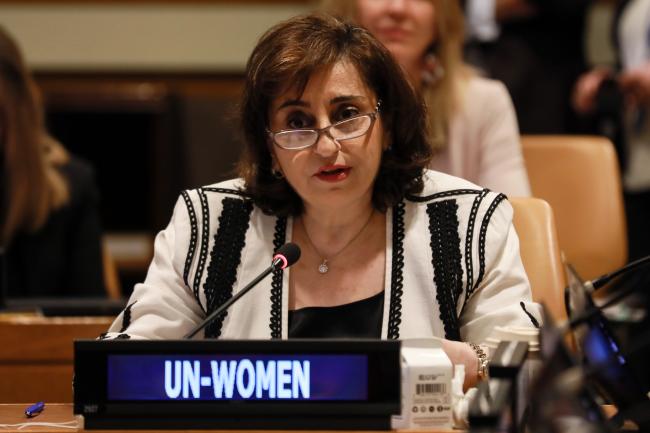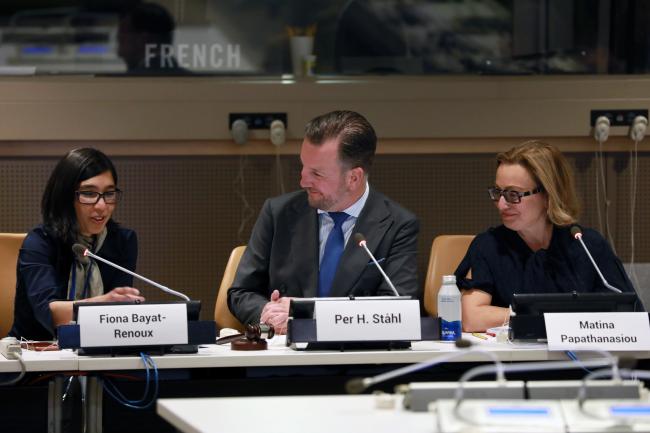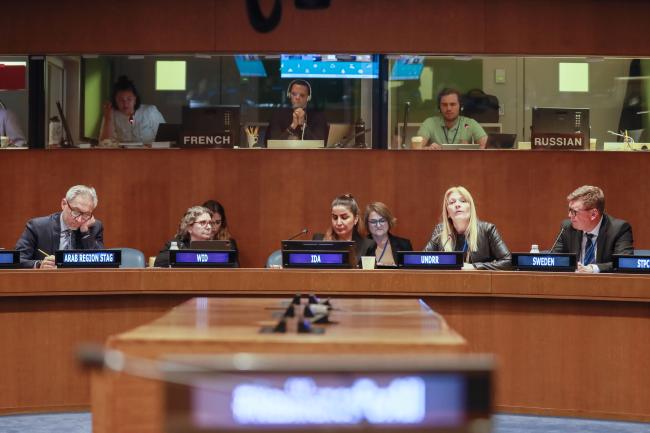On Wednesday, governments and non-state actors convened in the Disaster Risk Reduction (DRR) Hub, a day-long series of discussions on priority issues. Participants attended 12 events, many of which were standing-room only.
In the morning, participants considered risk-sensitive urban development, disaster risk data and analytics, human mobility, and gender-responsive DRR.
Want to dig deeper? Read the full Earth Negotiations Bulletin daily report.
Alessandro Attolico, Making Cities Resilient 2030 Global Partnership, stressed that 60 percent of the global population will live in cities by 2030. Niels Holm-Nielsen, Practice Manager, World Bank’s Global Facility for Disaster Reduction and Recovery, discussed the importance of technical work and genuine, long-term stakeholder engagement, which is informing efforts to tackle flooding in Dar es Salaam, Tanzania.
In an event on gender responsive DRR, many speakers emphasized support for a Gender Action Plan (GAP) to be included in the draft political declaration of the Midterm Review. “Women are the true face of resilience” said Sima Sami Bahous, Executive Director, UN Women, urging greater inclusion of women in DRR planning and decision-making. Mami Mizutori, Special Representative of the UN Secretary-General for Disaster Risk Reduction and Head of the UN Office for Disaster Risk Reduction (UNDRR), noted support to include a GAP in this meeting's political declaration.
In the afternoon, participants considered the role of children in action for resilience, the Small Island Developing States (SIDS) Accelerated Modalities of Action (Samoa Pathway), infrastructure and engineering for DRR, intersectionality, synergies between climate action and DRR, risk-proofing sustainable development, private investment for resilience, and the role of non-state actors.
On synergies between climate action and disaster risk planning, several speakers highlighted links to the Paris Agreement’s Global Stocktake and under the Warsaw International Mechanism on Loss and Damage. Elizabeth Riley, Executive Director, Caribbean Disaster Emergency Management Agency (CDEMA), explained that extreme climate change phenomena are “not in our playbook,” while Mariya Ahmed Didi, Minister of Defense, Maldives, highlighted efforts to build resilience in small islands, including investing in shoreline protection, local management plans, traditional knowledge, data, and new technologies.
In a session on private investment, many panelists observed the significant and growing investor appetite for green bonds, decarbonization, and portfolios that include resilience. Panelists discussed gaps in supply, the need for standards and guidance, and the importance of robust data and forecasting tools. Providing an example, Matina Papathanasiou, Founding Partner, QIC Global Infrastructure, said it was more cost effective to build a sea wall above current regulatory minimums than to rebuild an entire airport runway vulnerable to storm surge.
To receive free coverage of global environmental events delivered to your inbox, subscribe to the ENB Update newsletter.
All ENB photos are free to use with attribution. For the High-Level Meeting on the Midterm Review of the Sendai Framework, please use: Photo by IISD/ENB | Mike Muzurakis
Scaling-up Risk Sensitive Urban Development

From L-R: Cristian Torres, National Director of Risk Management Secretariat, Ecuador; Michele Emanuele Giordano, Deputy President, Province of Potenza, Italy; Niels Holm-Nielsen, Global Facility for Disaster Reduction and Recovery, World Bank; Ibrahim Ozer, Director-General for Disaster Management and Climate Change, Turkish Red Crescent; and Patricia Miranda Menezes, Mayor’s Office Advisor for Global Agendas, Barcarena, Para, Brazil

Xavier Castellanos Mosquera, Under-Secretary-General, International Federation of the Red Cross and Red Crescent Societies
Human Mobility in the Context of Disasters
Accelerating Action for Gender Responsive Disaster Risk Reduction

Mami Mizutori, Special Representative of the UN Secretary-General for Disaster Risk Reduction and Head of UNDRR

View of the panel during the event on Accelerating Action for Gender Responsive Disaster Risk Reduction

Maria Antonia Yulo Loyzaga, Secretary, Department of Environment and Natural Resources, the Philippines
Accelerating Implementation of DRR and Resilience in Infrastructure

Abhilash Panda, Head, Financing Resilience, De-risking Investment and Infrastructure Resilience, UNDRR

Mathieu Verougstraete, Economic Affairs Officer, Financing for Sustainable Development Office, UN Department of Economic and Social Affairs

View of the room during the Accelerating Implementation of DRR and Resilience in Infrastructure event
Synergizing Climate Action and Disaster Risk Reduction

From L-R: Elizabeth Riley, Executive Director, Caribeean Disaster Emergency Management Agency (CDEMA); Mutale W.K. Nalumango, Vice President, Zambia; and Loretta Hieber Girardet, Chief, Risk Knowledge, Monitoring, and Capacity Development Branch, UNDRR
Risk-Proofing Sustainable Development

From L-R: Christos Stylianides, Minister for Climate Crisis and Civil Protection, Greece; Andrew Revkin, Director, Initiative on Communication Innovation and Impact, Columbia Climate School; and Nesibu Yasin Seid, Deputy Commissioner, Disaster Risk Management Commission, Ethiopia

